What's New
Displaying results 3651 - 3660 of 4052
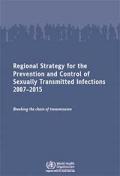
Resource | Publications,
Worldwide, nearly one million curable sexually transmitted infections (STIs) occur each day, half of them in Asia. Where they are common, STIs are among the major causes of serious preventable conditions such as infertility, ectopic pregnancy, cancer and congenital infections. Millions more incurable STIs add to the heavy burden of morbidity and mortality for women, men and children. Globally, unsafe sex ranks third among the morbidity risk factors, accounting for over 5% of attributable disease burden, and fifth for attributable mortality. For these reasons, interventions to prevent and control STIs are among the most cost-effective public health measures, which moreover contribute to achieving several Millennium Development Goals (MDGs).
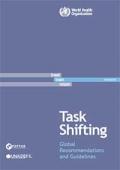
Resource | Guidelines,
The global recommendations and guidelines on task shifting propose the adoption or expansion of a task shifting approach as one method of strengthening and expanding the health workforce to rapidly increase access to HIV and other health services. Task shifting involves the rational redistribution of tasks among health workforce teams. Specific tasks are moved, where appropriate, from highly qualified health workers to health workers with shorter training and fewer qualifications in order to make more efficient use of the available human resources for health.
The recommendations and guidelines on task shifting have been developed in the context of efforts to rapidly increase access to HIV services in order to progress as far as possible towards the goal of universal access to HIV services by 2010. However, the impact of task shifting would not be restricted to HIV service delivery. The implications for other essential health services, and the potential for wider health systems strengthening, are recognized throughout.
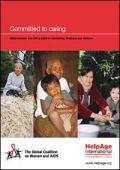
Resource | Publications,
Interviews and focus group discussions with older women carers in three countries – Cambodia, Thailand and Vietnam - indicate that they assume multiple responsibilities in caring for people living with HIV and/or orphaned and vulnerable children. Looking after an adult child can involve a range of tasks, from obtaining food, water and medicine to assisting them to eat, bath, and dress. Caring for both affected and infected grandchildren requires them to take on important duties in areas such as health, nutrition, and education. In both cases, older women are key providers of emotional support.
The consequences of serving as the main carer in these circumstances are often severe, interconnected, and enduring. Their economic status can be weakened due to direct costs (medical, food, clothing, education) and indirect costs (loss of income support, lack of time to earn money), leading them to sell assets and borrow money.
Despite their evident burden, older women carers remain neglected within the response to HIV and AIDS in Cambodia, Thailand and Vietnam. Numerous commitments relating to older carers have been made at international level, but national policies guiding the response contain few, if any, specific references to them.
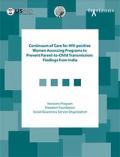
Resource | Publications,
In India, 38.4 percent of the estimated 5.1 million HIV infections are among women (UNAIDS/WHO 2006). Although mother-to-child transmission (MTCT) accounts for a little less than 4 percent of all HIV infections in India, in sheer numbers it is the cause of approximately 56,700 children infected with HIV each year (IAP/NACO 2006, UNICEF 2006). With support from UNICEF, India’s national program for prevention of parent-to-child transmission (PPTCT) of HIV has been underway since 2002. More recently, the government launched a national treatment program that offers antiretroviral therapy (ART) to HIV-positive women, children below 15 years of age, and men. However, since the start-up of the ART program there have been concerns about access to and utilization of these services by women and children. To address these concerns, a comprehensive PPTCT initiative that emphasizes treatment for HIV-positive women and their children was launched in 2004 by the National AIDS Control Organization (NACO) using funds from the Global Fund to Fight AIDS, Tuberculosis, and Malaria. To better implement this initiative, it is imperative to understand the prevention and care needs of the women who are receiving or have received PPTCT services, referral systems between PPTCT programs and other HIV-related and reproductive health services, and linkages between PPTCT programs and community-based organizations and NGOs.

Resource | Publications,
At this point in time, the HIV epidemic in Nepal is still concentrated among high-risk groups, including injecting drug users (IDUs). Nepal has approximately 20,000 IDUs, with at least 5,000 living in the capital, Kathmandu. HIV prevalence among IDUs in Kathmandu is extremely high. In 2003 – the reference year of this analysis – that rate was 68%.
This paper has two objectives. The first is to examine the robustness of two different epidemiological models; these models were used to determine the impact of IDU interventions in Nepal when interventions are scaled-up to reach 60% of IDUs, as recommended by UNAIDS. The second objective is to disseminate the outcome of two cost- effectiveness analyses of IDU interventions in Nepal. These analyses used identical data sets to determine the cost-effectiveness ratios under various scenarios of intervention coverage.
Nepal has been selected as a case study for two reasons. Firstly, it has good quality cost data information that is easily converted into 2003 prices, and behavioural surveillance data from 2003. Secondly, Nepal was one of four countries in the region where an alpha version of the Asian Effectiveness Model (AEM) (Brown and Peerapatanapokin 2004, Brown T 2005) was available at the time of the analysis (June/July 2007).

Resource | Publications,
FHI/Vietnam shared results from the female sex workers (FSWs) rapid interviews at a workshop for provincial project staff, health educators, peer educators, drop-in center managers, and partner project managers. The aims of the workshop were to review current status of programming and to develop new approaches to overcome barriers to female sex workers (FSWs) risk behaviors.
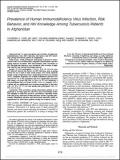
Resource | Publications,
The global epidemic of human immunodeficiency virus (HIV) has radically challenged efforts at tuberculosis control and treatment. Tuberculosis is a leading cause of death among HIV patients, with recent reports indicating that between 27 and 80% of tuberculosis patients are coinfected in a variety of settings with measurable prevalence of HIV.
HIV prevalence among tuberculosis patients in Afghanistan is currently quite low. However, lack of knowledge of HIV and engaging in high-risk practices, particularly regarding health, make this group vulnerable. Health education sessions regarding HIV, sexually transmitted infection, and blood-borne infections should be implemented for tuberculosis patients during the treatment course.

Resource | Fact Sheets,
The survey aimed to improve the understanding the situation of HIV and sexually transmitted infections in female sex workers. The result would help a better prevention programme planning in Hong Kong.
The survey was conducted between 6 November 2006 and 31 January 2007. Five participating NGO outreached to their familiar settings and conducted interviews with female sex workers.
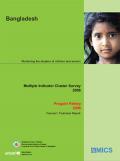
Resource | Publications,
The Bangladesh Bureau of Statistics has been conducting the Multiple Indicator Cluster Survey since 1993 with the technical support of UNICEF. MICS 2006 was conducted during June through October 2006. The MICS 2006 is the ninth survey conducted in Bangladesh. This final report is based on the MICS 2006. A key findings report was published in June 2007.
The Bangladesh Bureau of Statistics conducted the Multiple Indicator Cluster Survey (MICS) between June and October 2006. The main objective of the survey was to provide up-to-date information for assessing the situation of children and women in Bangladesh. The survey also aimed at furnishing data needed for monitoring progress towards goals established by the MDGs, the goals of A World Fit For Children, and other internationally agreed upon goals, as a basis for future action; as well as contributing to the improvement of data and monitoring systems in Bangladesh and strengthening technical expertise in the design, implementation, and analysis of such systems.
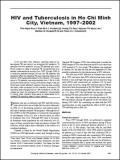
Resource | Publications,
In Ho Chi Minh City, Vietnam, reporting rates for tuberculosis (TB) are rising in an emerging HIV epidemic. To describe the HIV epidemic among TB patients and quantify its impact on rates of reported TB, we performed a repeated cross-sectional survey from 1997 through 2002 in a randomly selected sample of inner city TB patients.
In more recent years, rising HIV infection rates in TB patients have been documented in Ho Chi Minh City, the major urban area with the highest HIV prevalence in the country. Since 1997, Ho Chi Minh City has also reported increasing TB rates, particularly for young adults.
Our study objective was to describe the course of the HIV prevalence among TB patients in Ho Chi Minh City during 1997–2002. By combining our data with the NTP reporting data, we also quantifi ed the effect of HIV on the TB reporting rates in this city.





